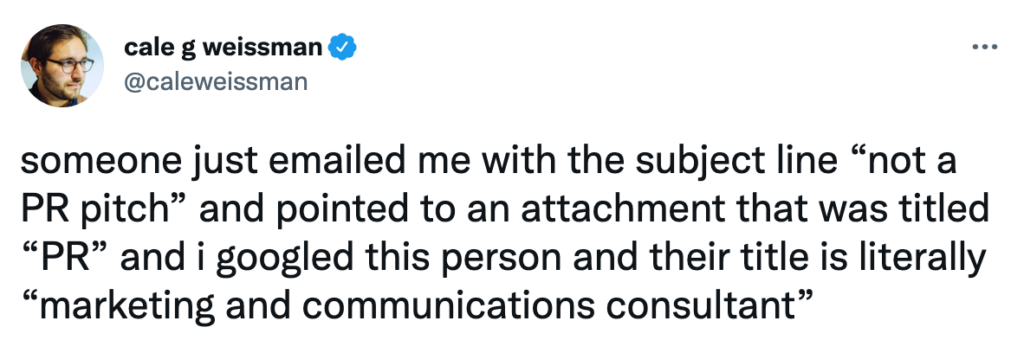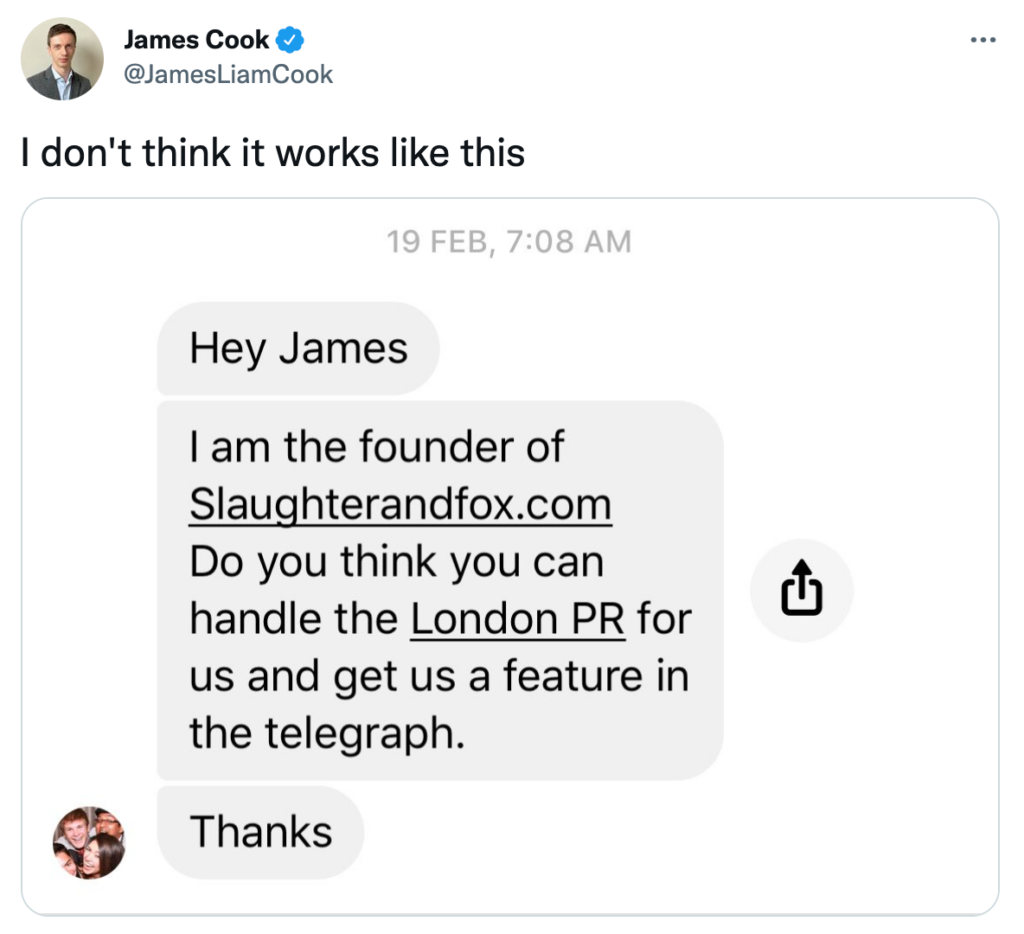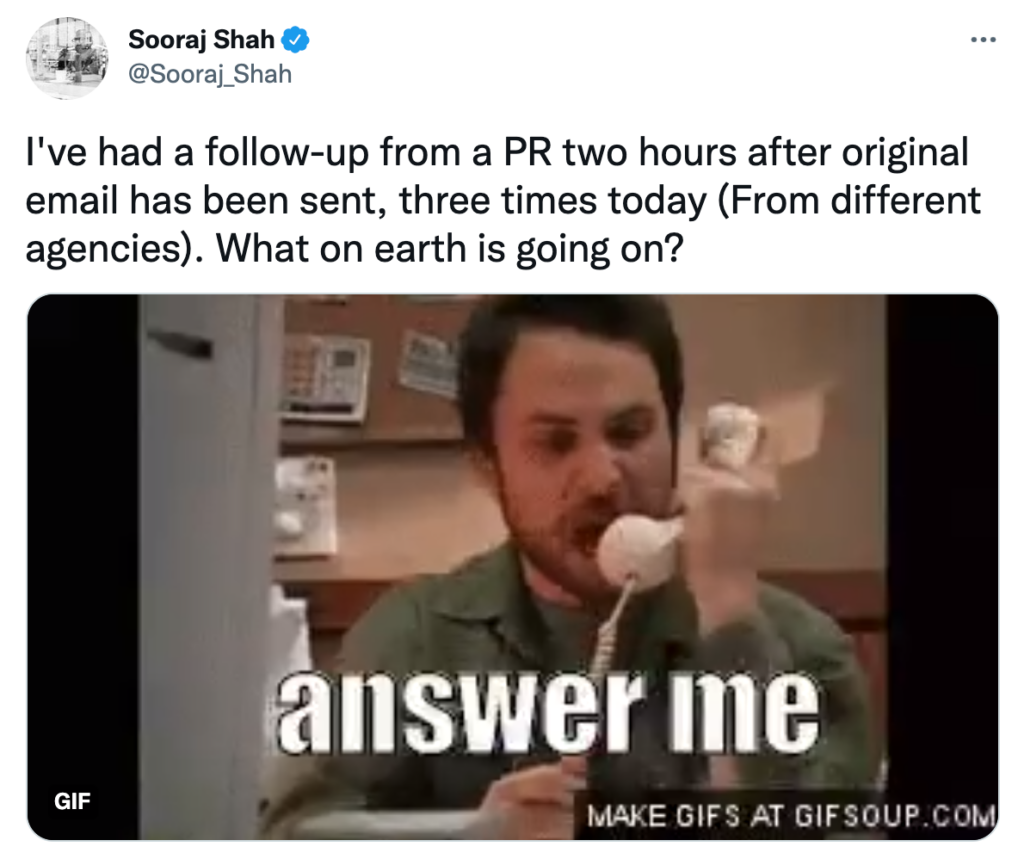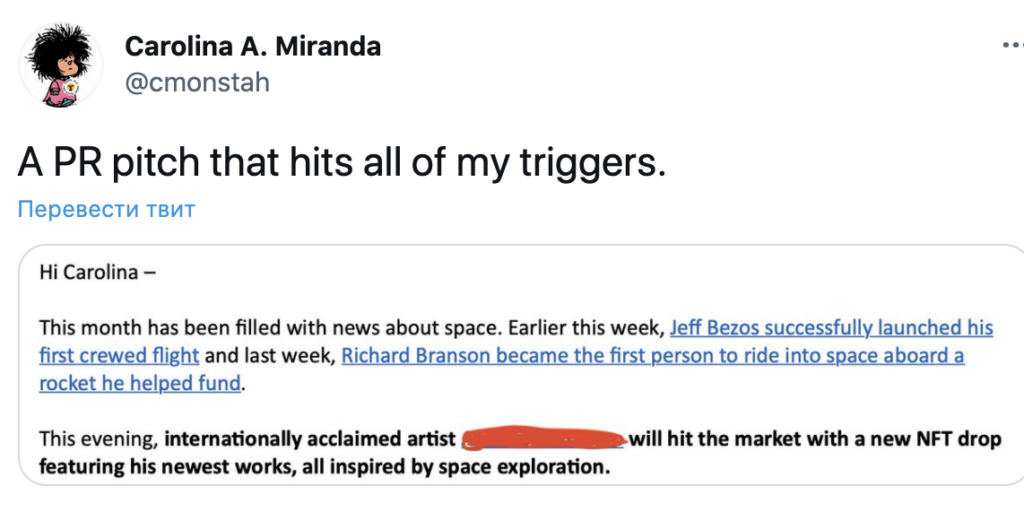They say that you should always learn from your mistakes, and it’s true. That’s how you get better and avoid doing the same thing again, right?
Well, yes, but sometimes, it gets a little difficult to admit that you were wrong. Since it can be embarrassing, why don’t you just learn from other people’s mistakes?
Read on to discover:
- What can you learn from bad PR pitches
- Match the right message with the right audience (and journalist)
- Check your definition of “newsworthy”
- Be transparent about who you are and what you want
- Do your research
- Understand what you’re asking for (and how to ask for it)
- Don’t be a stalker
- Avoid ridiculous or non-existent ties to big names, events, or topics
If you’re in a rush, try Prowly Pitching Tool and increase your chances of pitching success.
What can you learn from bad PR pitches
Seeing cringy, sometimes laugh-out-loud attempts to get media attention is just the kind of thing to stick in your mind and remind you of some basics the next time you plan your pitch.
When failed PR campaigns are working through a postmortem examination to discover what went wrong, it’s often the case that the problems started with the very first pitch that was sent out. Bad PR pitches can show you what to avoid and why.
So grab some popcorn, and let some seriously bad PR examples guide you to important things you should & shouldn’t do when contacting the media.
Match the right message with the right audience (and journalist)
Let’s start with something that you would think should be pretty obvious and straightforward. We all know that 1) Some media outlets are specialized around a certain topic and 2) Many journalists at every media outlet are specialized around a certain topic.
This is not some shocking revelation, is it? Is there anyone who thinks that any random journalist will be interested in any random topic?
Well, apparently there is:

Reaching out to the right person is one of the absolute basics of any effective PR pitch. And while the “right person” might be hard to identify sometimes, at least be sure that you’re not writing to someone who covers legal affairs with news about babies or anything else not related to legal affairs.
Obvious lesson learned: Make sure the interests of your contact are aligned with the content of your pitch.
Check your definition of “newsworthy”
Different people have different definitions of words like “expensive”, “interesting” or “attractive”, which is fine — those are subjective terms. However, there are other words that pretty much everyone should understand in much the same way.
Words like “newsworthy”, for example. But unfortunately, it’s clear that not everyone does:

A real PR pro understands that one of the absolute basics of pitching is convincing your contacts that whatever news you’re sharing is actually newsworthy. This doesn’t mean interesting to the people behind it or anyone who has a professional or financial stake in getting coverage, but interesting to average consumers of a particular media platform.
A real PR pro’s evil twin ignores this and instead sends completely unnewsworthy announcements to journalists who immediately realize they’re wasting their time and move on to something else.
Sorry, but no one cares if you hired a new assistant undersecretary to the assistant regional manager or if your company Christmas party was a great success. Journalists need to be convinced that covering your announcement will really be of value to their readers or viewers.
Obvious lesson learned: Be absolutely sure that whatever you’re sharing with journalists is intriguing to them and their audience. Failing to do this will result in your name being associated with junk mail. Good luck connecting with the media after that!
Be transparent about who you are and what you want
Here’s another rule that seems obvious, but so many pitches are sent by people who think journalists believe everything and check nothing:

Is there anything more suspicious than “not a PR pitch”? This is the PR equivalent of email spam and gets the same response from recipients. You don’t have to trick your way into getting attention from media contacts. In fact, by being direct and honest about why you’re reaching out, you’re doing everyone a favor by letting both sides get to the point.
Remember that journalists get tons of emails and yours is often just another part of the daily flood. No one has time for clever games that sound like bad advice from a list of life hacks for public relations. Journalists expect to receive pitches and definitely prefer to be able to quickly read them and get the essence of what’s being offered. Help them out by being transparent and professional right from the start.
Seriously, why does anyone need to be told not to lie?
Obvious lesson learned: Set the right tone right from the start by communicating in a professional manner, not by tricking someone into falsely believing you’re not asking for media coverage.
Do your research
No, you don’t need to write a book about everyone you plan on reaching out to, but you should verify things like, you know, if the person is alive or not:

Ok, this might be an extreme example, but it shows just how easily you can ruin any chances of success by not checking some basic things before you reach out. This includes simple things like making sure the journalist is still at the same platform, checking to see if they still cover the same topic as last time if you have a previous relationship with them, etc.
Things change and people move around (and die, as at least one PR person found out…). Be sure that your contact list hasn’t become embarrassingly out of date and that you know who you’re writing to, where they work and what they do.
Staying current with the names, trends, technology or other relevant information behind your story is a must, too. Asking to interview dead people, for example, is the perfect way to tell your media contact that you don’t spend a lot of time preparing your pitch or learning about your subject matter — why would they help anyone like that?
Obvious lesson learned: If you’re using your own contact database, it’s crucial that you take the time to clean up your media lists occasionally and make updates where needed.
Understand what you’re asking for (and how to ask for it)
Unless you are working for or representing one of the mega-brands of the universe, you’ll find that the power equation between you and journalists favors their side.
You need them more than they need you. Their inboxes are full of messages just like yours, which makes it really hard to understand how someone actually sent this:

You’re right, James, that’s not how it works. When you reach out to a media contact, you’re starting a conversation. Yes, both sides understand that you want this dialogue to lead to media coverage, but there is still a getting-to-know-you process. Trying to skip this part usually ends with your pitch getting skipped.
Even in today’s world of seemingly endless media choices, media coverage is still a limited and valuable commodity. You don’t just order it up and wait for it, like a pizza, to be delivered to your home.
Treating media contacts with the respect of acknowledging their role and the work they do is a must. Even then, you still have to have realistic expectations of what’s possible and what they are willing to do.
“I have a website, now get me a feature in a major UK daily newspaper. Boom, done.” No, it definitely does not work like that.
Obvious lesson learned: Again, you need journalists more than they need you, so your approach should always be governed by treating them professionally and the need to make your case as to why your pitch deserves their attention.
Don’t be a stalker
Maybe there’s a parallel universe where everyone responds to your emails within minutes, but here in this world, it takes time. Still, many PR people cannot wait to follow up on their pitches:

Let’s acknowledge that there is no scientific formula that gives us a definitive answer to the question of how long you should wait to follow up on your pitch. Still, some common sense can help out here — why would you follow up just two hours after sending a pitch?
The consensus on this question seems to be that you should wait at least 24-36 hours before you follow up with an email. Journalists repeatedly make it clear that email is their preferred method of contact, and you can understand why. Even if you have their phone number, it’s best to stick to email for your follow-up.
There is absolutely no point in bombarding journalists with constant follow-up emails, and certainly not with phone calls. Three emails are enough. After that, it is clear that they are either not interested, something is wrong with the address, or they are out.
Obvious lesson learned: How would you treat someone who finally got through to you on the phone to demand your time after they spent the previous several days writing to you and calling you constantly? Exactly. This is not the way to start any kind of useful cooperation, so don’t do it.
Avoid ridiculous or non-existent ties to big names, events or topics
Exaggerating relevance or connections to names and topics in the news is an old trick those desperate for media coverage use. Here’s an example:
You’re writing about Brad Pitt’s divorce? My client’s sister’s neighbor’s cousin’s best friend’s ex went to school with a guy who knew him — I can set up a meeting with my client today!” or “Cryptocurrency is a hot topic now and this new sci-fi novel mentions something just like it! Do you want an exclusive?
Trying to inflate the importance of A by tying it to the fame or notoriety of B will probably never go away, as this journalist was reminded:

Journalists can tell when you’re insulting their intelligence with nonsensical references to names and topics that you think will get their attention and make them forget that your announcement is not terribly interesting. Actually, it’s pretty easy and it just makes you look silly.
As a PR pro, your credibility as someone who supplies journalists with legitimate stories of interest to the public is always on the line. Why would you risk losing valuable contacts by feeding them clearly ridiculous claims about why your announcement is worth their attention?
Obvious lesson learned: Give journalists credit for being able to see through cheap tricks like this and others. The moment they feel like you are not treating them like professionals is the moment you’ve lost a media contact.
Remember that no one can spot a really bad PR pitch better than a journalist
Let’s close the list with a reminder the person you’re sending your pitch to is possibly more of an expert on PR pitches than you are. After all, journalists get hundreds of them weekly—who better know what works and what doesn’t?
Journalists actively save and share the worst, most unintentionally funny and entertaining examples of PR pitches they get. The internet is full of them, and it’s not hard to find bad PR examples that got attention for all the wrong reasons.
You can understand if some journalists dream of a little revenge for having to suffer through so many pitch-related insults:

Wow, tagging journalists in Google docs? We don’t condone throwing bricks at anybody or anything but THAT is deserving of some internet-level shaming for sure...
Cover photo by Siora Photography
